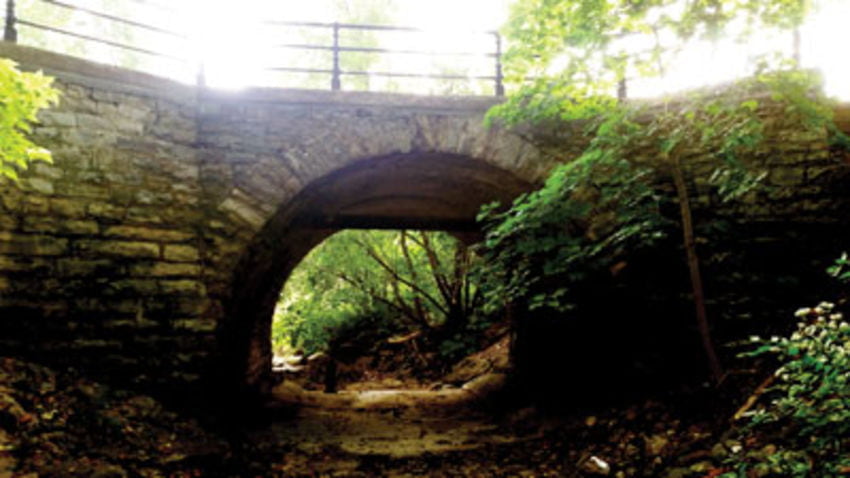
View the entire article written by Joe Bradfield of Trenchless Technology here!
Cured-in-place pipe Technique Renews Wastewater Lateral While Sparing Landmark Bridge
The motherhouse of the Dominican Sisters of Peace was becoming a frequent stop for The Waterworks, a residential and industrial plumbing firm based in Columbus, Ohio. At about 100 years old, the wastewater lateral from the motherhouse to the street was well past its life expectancy. Continued treatments for backups due to root intrusion in the lateral’s widening joints were becoming too much for the antiquated pipe to bear.
Scott Steiner, project coordinator for The Waterworks, said crews used a jet vac and tractor cam to get a clear video of the problem area. Upon seeing it, he said, “We recommended it was time to look into a long-term solution to this problem. They agreed.”
The Waterworks proposed rehabilitating the lateral with cured-in-place-pipe (CIPP) technique, which would create a durable, impervious pipe with improved flow. They could make the repair in a single shift at a fraction of the cost of open-cut replacement.
They consulted Mike Moore of Source One Environmental. Headquartered in Davison, Mich., Source One is HammerHead Trenchless Equipment’s authorized distributor of HydraLiner CIPP tools and consumables.
No Trenching
Open-cut replacement had been ruled out for a number of reasons, including the need to preserve a historic deck-arch bridge. Most of the 135-ft long manhole-to-manhole run of original line was 8-in. diameter vitrified clay pipe. But one section was a 50-ft length of 8-in. cast iron that ran through the foundations of the bridge’s century-old stonework at each side of the creek. To cross the creek at continuous grade, the iron pipe had been suspended from brackets attached to the bridge’s underside.
Trenching would not only damage the lawns and gardens of the motherhouse’s property, but it would require partial demolition of the bridge, irreparably degrading its status as a perfectly preserved artifact of the institution’s past. The bridge’s deck supports the only two-way access to the motherhouse. That meant demolition would also reroute all traffic to a one-way drive past the Dominican’s retirement center, the site’s only other access.
“Early estimates to repair the damaged area by closing and trenching the road, partially dismantle the bridge, replace the damaged pipe and then put everything back together were well into six figures,” Steiner said. “And the work would have taken several months. The project was a great candidate for pipe lining through the CIPP technique.”
Originally posted to Trenchless Technology on April, 22 2015 by Joe Bradfield. View the full article here!
